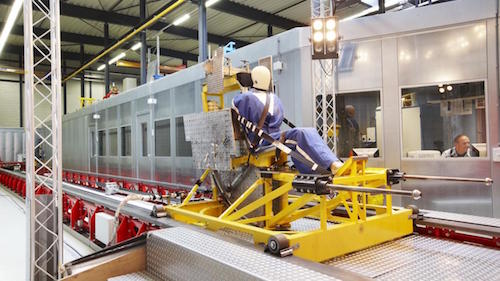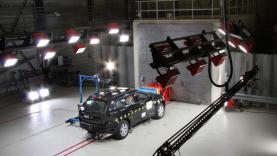Siemens Accelerates Automated Driving Solutions Via TASS Acquisition

As part of Simcenter, the TASS applications will help create an integrated solution to frontload verification and validation of automated driving systems. Image Courtesy of Siemens
Latest News
September 6, 2017
Adding to the frenetic pace of new developments in the automated driving systems and autonomous vehicle space, Siemens PLM Software has snapped up TASS International, a provider of simulation software and consulting services to bolster the capabilities of its Simcenter portfolio in this critical area.
TASS is best known for its PreScan physics-based platform used to simulate and model advanced sensor systems such as Advanced Driver Assistance Systems (ADAS) and MADYMO, a tool used to analyze and optimize occupant safety designs. These tools will add significant heft to the Simcenter simulation portfolio to address the burgeoning and emerging area of autonomous vehicle design, according to Dr. Jan Leuridan, Siemens PLM Software’s senior vice president in charge of simulation and test solutions.
 TASS PreScan simulates complex traffic scenarios while the MADYMO software is used for occupant safety modeling. Image Courtesy of Siemens
TASS PreScan simulates complex traffic scenarios while the MADYMO software is used for occupant safety modeling. Image Courtesy of SiemensAs automotive OEMs, specialty players and small startups hunker down in the weeds of self-driving car and ADAS development, simulation is taking an increasingly vital role given the complexity and challenges related to testing what’s essentially an unlimited range of scenarios, Leuridan explains.
“The biggest challenge is verifying how everything is working properly,” he says, adding that the amount of scenarios to cover is “explosive”—specifically, around 8.8 billion miles (or 14.2 billion kilometers) of testing before autonomous vehicles are deemed safe enough for consumers, according to past statements from Toyota’s CEO. “What that means is verification and validation of all of these systems is only made possible through simulation,” Leuridan says.
TASS’ offerings come into play in two key areas. Its PreScan simulation environment can model complex sensor networks, collecting data from radar, LDAR, onboard vehicle and road-side cameras, and other vehicle sensors to provide perspective on what’s going on around the car and how to best control resulting operations. PreScan simulates the different environments in which the vehicle operates, including traffic and weather conditions, among other scenarios.
“PreScan can model what a vehicle would do at an intersection, how to respond in highway traffic or how the vehicle would work in fog or snow conditions, Leuridan explains. “There are millions of scenarios to be test to certify that things are working well and you can no longer do this kind of work with physical testing—you must maximize use of simulation to do verification.”
 As part of Simcenter, the TASS applications will help create an integrated solution to frontload verification and validation of automated driving systems. Image Courtesy of Siemens.
As part of Simcenter, the TASS applications will help create an integrated solution to frontload verification and validation of automated driving systems. Image Courtesy of Siemens.While the TASS applications are available as part of Siemen’s SimCenter simulation portfolio today, there will be longer-term efforts to create tighter integration between the different analysis applications as well as within the Teamcenter PLM platform, Leuridan says. The TASS tools round out SimCenter’s capabilities in the area of autonomous vehicle design, augmenting existing simulation and systems engineering capabilities already inherent in the Siemens simulation portfolio. These include functionality in the area of embedded systems design and application lifecycle management capabilities obtained through the Polarion and Mentor Graphics acquisitions, he says.
“When you look at the simulation needs of engineering systems for the autonomous driver, it covers quite a spectrum,” Leuridan says. “We’re providing a richer environment with PreScan to deal with verification and validation of how these new systems are working.”
Watch this video to see how TASS PreScan is being used to model the American Center for Mobility (ACM), a 335-acre facility used to test, verify, and certify autonomous vehicles.
Subscribe to our FREE magazine, FREE email newsletters or both!
Latest News
About the Author
Beth Stackpole is a contributing editor to Digital Engineering. Send e-mail about this article to [email protected].
Follow DE





